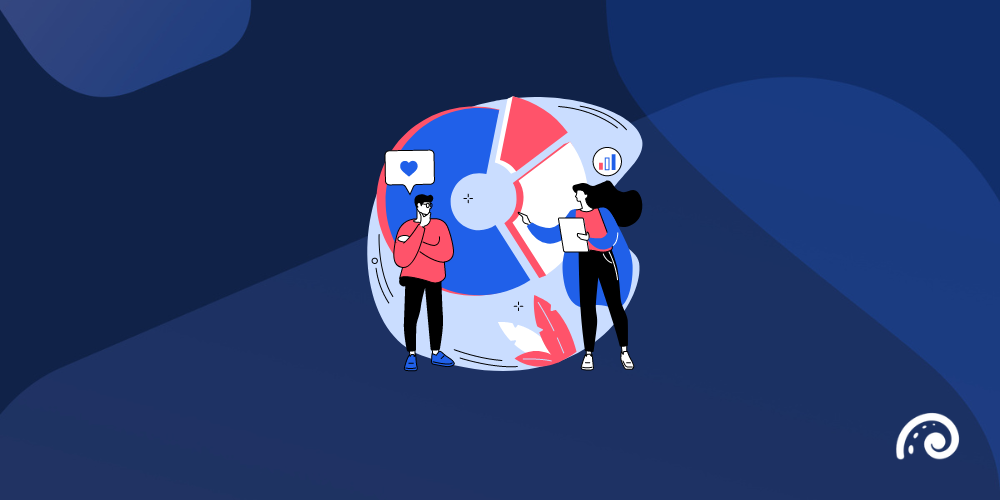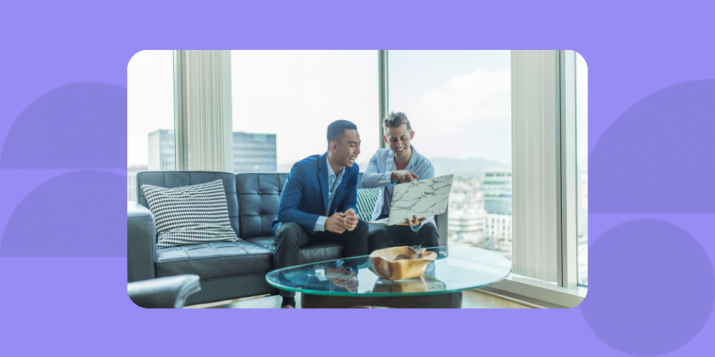
5 things that happen when marketers use a B2C strategy for B2B
B2B and B2C marketing strategies are distinct in many ways – but need they be so different? Sure, B2B strategies target the pragmatic, logic-driven mindset, while a B2C marketing strategy targets the emotionally driven consumer. But, fundamentally, they are both targeting the same audience: people.
And people buy from people.
As the business climate continues to blur the line between personal and professional, B2B marketers are realizing that their buyers aren’t logical, unemotional decision-making machines. They’re humans driven by emotions – however subconsciously – at every stage of the buying process. And, by using elements of B2C strategy, B2B marketers can attract, engage, and retain more customers.
So, what exactly happens when B2B marketers use a B2C marketing strategy? More importantly, how can you follow in their footsteps to achieve the same successes? Let’s dive in.
1. They create comprehensive buyer personas
B2B marketing language often feels too impersonal. This is perhaps because B2B marketers tend to align their messaging as though they’re speaking to a whole organization when, in actuality, they’re speaking to individuals.
To market to individuals, you need to personalize your messaging. And you can’t personalize your messaging without segmenting your audience into buyer personas.
B2B buyer personas can be just as comprehensive as B2C buyer personas. To create them, you need to delve into the motivations, pain points, and goals of your target decision-makers from a business perspective.
You can use social data to develop your buyer personas along with other forms of market research. Attributes you might use to create your buyer persona include:
- Career: What is their job title/role? How long have they been working at the company? Who do they report to?
- Buying process: What is their purchasing authority? How many people are in their buying group? What steps do they take in their buying process?
- Business motivations: What are their business’s goals? What drives their buying initiatives?
- Existing products: What products/services do they currently use? Are they a customer of your competitor? What do they like/dislike about the product they currently use?
- Business pain points: What challenges are they facing right now? What business objectives/goals are they struggling to meet? How can your business help solve their problems?
- Method of information collection: What websites/resources do they use for research? What sources do they trust?
- Budget: What are the minimum and maximum amounts that they are looking to spend?
Everything from your blog posts to your business proposal should be personalized to your buyer persona’s preferences. Why not make use of templates – like this free PandaDoc branding proposal template – to ease the creation of hyper-targeted content for different buyer personas.
2. They engage prospects with emotional marketing
Understandably, B2B marketing has always focused on rational rather than emotional marketing.
Unlike the average consumer, B2B buyers are typically making big-budget purchases. And, when one purchasing decision has the power to make or break a business, B2B buyers tend to purchase rationally with a strong focus on value and return on investment. Therefore, it’s normal for B2B marketers to approach buyers with rigidly data-focused, logic-driven messaging.
But wait. A study published by LinkedIn reports that emotional messaging drives 7x more value to B2B bottom-line measures than rational messaging. This suggests that B2B customers may, in fact, be more emotionally driven than B2C customers.
The reason why is this: B2B buyers make large purchases that directly affect the business as a whole. Nobody wants to be responsible for the purchasing decision that caused negative business repercussions. So, for a B2B buyer to buy from your brand, they need to trust your brand implicitly.
And how do you increase customer trust? Through the forging of an emotional connection.
Using emotional messaging in a B2B campaign involves focusing less on why a customer should use your product, and more on why a customer should invest in you as a brand.
Instead of speaking to an entire organization, you speak to the decision-making individuals on a personal level.
In doing this, you increase your ability to tap into emotions like confidence, reassurance, and awe.
Emotional messaging might mean humanizing your brand’s language to be more personable and likable, or using a proposal building software to create personalized proposals. By simply getting your audience to like you, or feel a positive emotion when they think about your brand, the more likely you are to gain their trust.
Recommended for further reading
3. They simplify the buying process
A B2C marketing strategy prioritizes the development of a simple, streamlined buying process. This is easy to do when you’re targeting a sole decision maker who can make impulse purchases. B2B purchases, however, require six to 10 decision-makers and a wealth of collected research, making for a considerably longer buying process.
This doesn’t mean B2B marketers should just accept this. According to Gartner, 77% of B2B buyers say that their last purchase was difficult or complex. This can lead to fatigue, overwhelm, and regrets.
Buyer enablement – the process of simplifying the buying cycle by providing customers with the resources they need to make quick, informed purchasing decisions, has significant benefits. Gartner found that the customers of businesses who provide valuable, decision-advancing information are more likely to feel at ease with their purchases and make big-budget buys without regret.
To simplify your buying process, analyze your buying cycle from start to finish. Identify decision roadblocks, over-complicated information, or areas where information is sparse.
From there, you can create content that helps buyers independently navigate the buying process.
Decision-influencing information, like terms and conditions, pricing, and reviews, should be easily accessible. For example, you might produce a full pricing breakdown or create contract samples that can be viewed online (you could use a template, like this distributor agreement template free of charge, to help you with this).
4. They provide more short-form content
Typically, the content used in B2B and B2C marketing has looked a little like this:

B2B marketing generally favors long-form content like white papers and case studies over short-form content. However, B2B marketers are quickly discovering the engagement potential of short-form content.
A study by Demand Gen Report discovered that 37% of B2B buyers want B2B vendors to
create shorter content. Specifically, they want more content like blog posts, infographics, and dynamic email content to feature more prominently in the early buying cycle.
Why? Because B2B buyers are busy people who don’t want to wade through wads of text to learn the basics about your business. Data-based infographics, for example, are easier to navigate during the initial interest stages than convoluted reports. This makes them more attractive to the time-pressed B2B buyer who wants to conduct efficient research.
For the B2B vendor, attracting these audiences with short-form content can lead them more smoothly and quickly through the buying cycle.
Short-form content is also a good way to keep customers in-the-know. B2C marketers use quick social media posts or emails to keep customers updated in real-time, thus avoiding any embarrassing inventory mishaps. With the assistance of your multichannel management software, use short social media posts or emails to alert customers to out-of-stock items and other issues.
5. They embrace social and visual content
As well as blog posts and infographics, B2B marketers are also embracing social content.
In the past, B2B companies have been wary of using social media. Its B2C-dominated advertising and customer-base made it seem unprofitable for B2B marketers. But, with the astronomical success of platforms like LinkedIn and Facebook for B2B-focused initiatives, social media content is quickly finding its place in B2B marketing.
LinkedIn is the obvious platform of choice. As the world’s largest professional social media network, approximately 25% of LinkedIn users are senior-level executives. One in eight are decision-makers, and 10 million are C-level executives. With access to over 55 million companies, it’s no wonder that so many B2B vendors regard LinkedIn as their most effective social platform for content marketing.
But what about other, more B2C-dominated social media platforms?
Believe it or not, B2B companies can use video platforms like TikTok to increase brand awareness and engagement. Take Shopify, for example, which aims to empower entrepreneurs through video. In fact, after LinkedIn, TikTok is a B2B marketer’s second most-utilized social media platform for posting video content.
So, if your target audience has a presence on the platform, adopting this B2C marketing strategy could be a success. Invest in a platform like Oktopost’s feature-rich B2B social engagement suite to monitor and manage your social content across multiple channels.
Enrich your B2B initiatives with a B2C marketing strategy
Adopting B2C strategies into B2B marketing might feel a little daunting. After all, it flips much of what we know about B2B marketing on its head. Where B2B messaging prioritizes logic, professionalism, and long-form content, B2C marketing is rooted in emotion, personability, and short-form content.
But things are changing. By infusing your B2B marketing methods with a B2C marketing strategy, you can appeal to prospects on a more intimate level.
Attract more leads and increase the longevity of your B2B relationships by simplifying your buying process, personalizing your B2B content, and injecting emotion into your brand storytelling and marketing messages.




